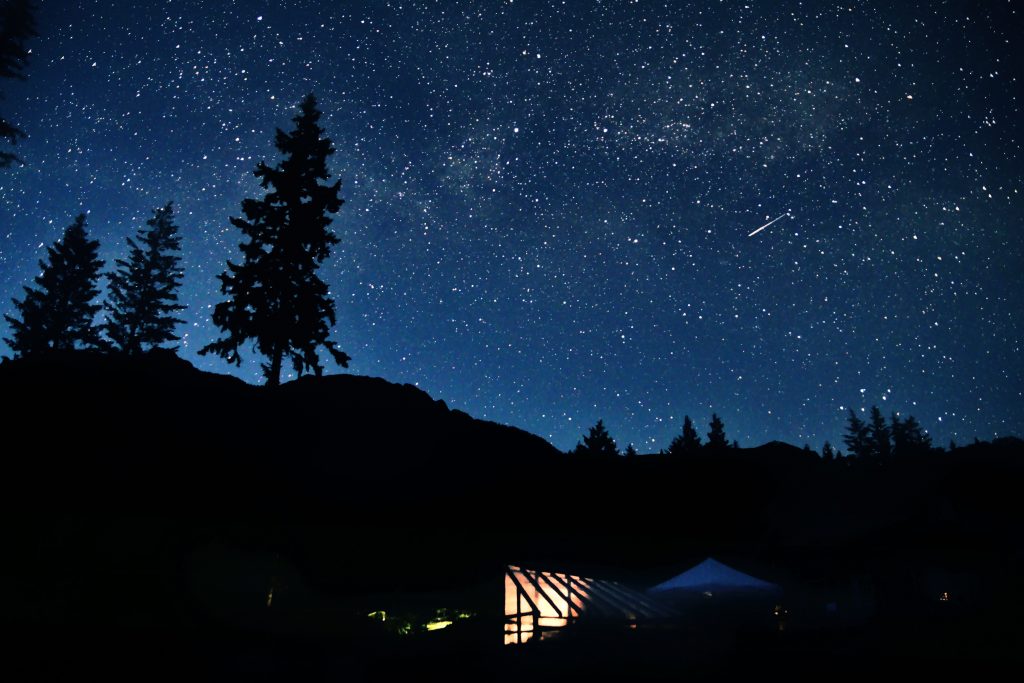 It will be an exciting year for stargazers in 2021. According to Jaime Hale of the Oregonian, the year will lack any great conjunctions, but there are plenty of meteors showers and a super moon combined with a total lunar eclipse. So pull out your telescopes and let’s dig in.
It will be an exciting year for stargazers in 2021. According to Jaime Hale of the Oregonian, the year will lack any great conjunctions, but there are plenty of meteors showers and a super moon combined with a total lunar eclipse. So pull out your telescopes and let’s dig in.
January
In case you missed it at the beginning of January, the Quadrantid Meteor Shower may be visible in the Pacific Northwest closer to its end on Jan. 12.
April
The Lyrid Meteor Shower will grace the skies Apr. 23-24. Known for bright meteors that move quickly, the shower actually begins on Apr. 14, but wait for the later dates for best visibility.
There will also be a supermoon on Apr. 27. It’s called “super” because the full moon will be at one of its closest to Earth – making it seem larger and brighter than normal.
May
We might be a bit too far north for the Eta Aquarid Meteor Shower, as it’s best seen from the southern tropics. So if you’re heading south on May 6-7, look up to the crescent moon and see a streak or two of light.
May 26 will see the second Supermoon of the year. Add to the “super” nature of the moon, there will be a total lunar eclipse on this day, leaving the larger than normal moon red as the Earth throws shadow over it.
June
Not visible from our part of the U.S., there will be an annular solar eclipse seen in the northeast and parts of the Midwest on June 10. An annular eclipse happens when the moon blocks only part of the sun. those who will able to see it will note the ring of fire effect where the moon will be the at the center and sunlight will create a ring around it.
A nearly-super moon will appear on June 24.
July
July 13 will see a conjunction of Mars and Venus. This means that you will be able to see both planets in one telescope view. Add to that, there will be a very thin moon in the sky, leaving lots of dark for stargazing.
In late July, the Delta Aquarid Meteor Shower will come by, but like the Eta Aquarids they won’t be easily seen above the southern hemisphere. So, again, if you’re heading south around July 28-29, look up for the rest of us.
If you’re not looking up from the southern hemisphere July 28-29, then you can try to spy the faint Alpha Capricornid. Faint because the moon will be bright – usually this shower is full of fireballs.
August
The Perseid Meteor Shower is considered by many to be the best of the year and this year it’ll be in our skies right after a new moon – meaning it’ll be a good year for this shower. The Perseids generally has 50 -75 meteors per hour amid the warm weather and clear skies of Aug. 12-13.
It was a song in ’61 for The Marcels, and it’s an occurrence on Aug. 22 this year. If you haven’t guessed it, it’s a Blue Moon.
October
Oct. 19-20 will see the smaller version of the Orionid Meteor Shower. 2021 will only see about 10-20 meteors per hour for this shower, but keep it on your radar because those numbers change year-to-year.
Drowned out by a bright moon on Nov. 16-17 this year, the Leonid Meteor Shower – debris from a comet called 55P/Tempel-Tuttle – is known for occasional big outbursts. However the next big year isn’t supposed to hit until 2099.
With up to 97% of the moon hidden by the Earth, Nov. 19 will be great time to look skyward. This partial eclipse of the moon should be visible in the early morning throughout the U.S.
Coming in on Dec. 13-14, the Geminid Meteor Shower will be the best one of the year with over 100 meteors each hour. Unfortunately, the cloud cover that’s our somewhat permanent companion that time of year will make seeing the meteors a bit hard. So, go out in the very early morning, before dawn on Dec. 4 through Dec. 20 to catch some of the shower unhampered by moonlight or rain clouds.
The last of the year will be the Ursid Meteor Shower on Dec. 21-22. The Ursid doesn’t have a lot of meteors, and it can be best seen in the late morning hours.
By Sally K Lehman
Do you have a story for The Advocate? Email editor@corvallisadvocate.com

